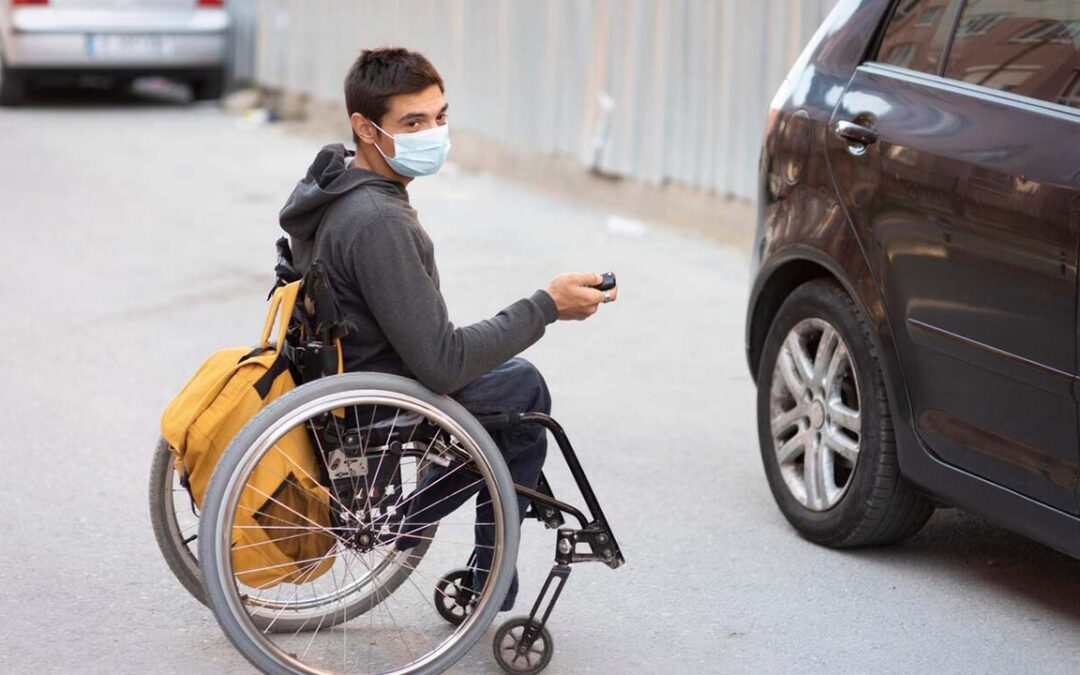When it comes to mobility solutions, wheelchair accessible van (WAVs) come in various types and sizes. Whether you’re looking for a personal car, a wheelchair accessible van, or a public handicap van near me, it’s important to know which vehicle suits your needs.
In this guide, we break down the most common types of WAVs, their features, and best use cases.
1. Small Wheelchair Accessible Vehicles
Small Wheelchair Accessible Vehicles are typically modified hatchbacks or compact MPVs, designed for simplicity and urban convenience.
Features:
- Lowered floor for enhanced internal headroom
- Rear-entry manual ramp, easy to deploy
- Seating for 1 wheelchair user and 1–2 passengers
- Compact turning radius and easier parking
Ideal For:
- Independent individuals or couples
- Urban or suburban driving
- Occasional use for short trips
- Users who don’t need extensive equipment storage
2. Medium-Sized WAVs
These are typically converted from MPVs or small vans like the Ford Tourneo Connect or VW Caddy. Medium WAVs offer more space and flexibility than their compact counterparts.
Features:
- Side or rear-entry access, with manual or powered ramps
- Flexible seating layouts, including foldable or removable seats
- Moderate storage space for personal items and mobility aids
- Can accommodate 1 wheelchair and up to 4–5 passengers
Ideal For:
- Families with a wheelchair user
- Transport for carers and dependents
- Daily errands, school runs, and regular appointments
These WAVs strike a balance between maneuverability and capacity, making them popular among both private users and small-scale professional services.
3. Large WAVs and Minibuses
Large WAVs, such as those converted from vehicles like the Renault Master or Mercedes Sprinter, are ideal for group transport or care services.
Features:
- Multiple wheelchair bays
- Wider doors and higher rooflines for standing headroom
- Electronic lifts instead of ramps for safer entry
- Multiple seating configurations, including space for carers or family members
Ideal For:
- Care homes or assisted living facilities
- Community transport schemes
- Group travel for mobility-impaired individuals
Use Cases:
- Day centres, group outings, medical transport, school pickups
Due to their size, these WAVs may require more space to park and drive, but they offer unmatched comfort and versatility for frequent multi-user transport.
4. Drive-from-Wheelchair Vehicles
These Wheelchair Accessible Vehicles allow users to remain in their wheelchair while driving the vehicle themselves, offering the ultimate form of independence.
Features:
- Custom driving controls, like hand-operated accelerators and brakes
- Automatic ramps or lifts for easy solo entry
- Wheelchair docking system in place of the driver’s seat
- Some also offer transfer seats for users who prefer to drive from a standard seat
Ideal For:
- Wheelchair users with full upper-body mobility
- Independent drivers with minimal caregiver support
These WAVs often require bespoke modification and are best sourced through specialist providers. They are life-changing for individuals seeking freedom and autonomy without depending on others.
5. Public Accessible Taxis
Thanks to UK accessibility legislation, many cities require a portion of taxis to be WAVs. These accessible taxis offer spontaneous, on-demand transport for wheelchair users.
Key Features:
- Fold-out ramps or electric lifts
- Wheelchair restraint systems for safety
- GPS-enabled booking apps
- Trained drivers to assist with boarding and deboarding
Ideal For:
- One-off or emergency journeys
- Tourists and visitors needing an accessible ride
- Users without access to a personal WAV
How to Find One:
- Search online for “wheelchair taxi near me” or “handicap van near me”
- Use local council directories or booking apps like Gett or Uber Access (in select cities)
Public WAV taxis bridge the gap for users who need accessible travel on-demand, without owning a vehicle.
Also, read more about the Technology Wheelchair Accessible Transport
6. Choosing the Right Type
Selecting the right WAV involves understanding your current and future needs. Ask yourself the following:
- How frequently will the WAV be used?
- Will the user remain in the wheelchair or transfer to a seat?
- How many passengers typically travel with you?
- Do you have a secure parking space that fits a larger vehicle?
- Is the WAV for personal use or a public service?
7. Budget and Funding Considerations
WAVs are an investment, but there are several options to reduce the financial burden:
Motability Scheme (UK)
If you receive certain disability benefits, you may be eligible to lease a WAV through Motability.
Used WAV Dealers
Refurbished or pre-owned WAVs provide a cost-effective alternative.
Finance Options
Many suppliers offer personal finance, hire purchase, or leasing arrangements.
Grants and Council Support
Some local councils or charities offer grants to help eligible residents purchase or lease accessible vehicles.
8. Try Before You Buy
Don’t underestimate the importance of a test drive. Many reputable suppliers offer home demonstrations, which allow you to:
- Evaluate ramp angles
- Check wheelchair visibility
- Experience onboard comfort
- Assess the entry/exit process
This is especially useful when selecting between medium or large WAVs, or choosing between ramp vs lift.
9. Maintenance and Servicing
All WAVs, particularly those with electronic lifts or automated ramps, require regular servicing.
Key things to check:
- Hydraulic system inspections
- Ramp alignment
- Safety restraints and tie-downs
- Vehicle batteries and accessibility controls
Maintaining your vehicle ensures ongoing safety, reliability, and resale value.
Final Thoughts
Understanding the different types of wheelchair accessible van services helps you make the right decision for comfort, practicality, and safety. Whether you’re purchasing privately or looking for a public wheelchair accessible van, the right vehicle can dramatically improve daily life.
